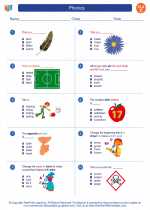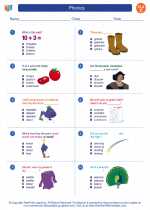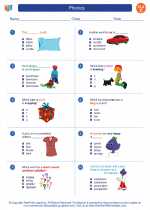Phonics Study Guide
Phonics is the method of teaching reading and writing that emphasizes the relationship between letters and their sounds. Learning phonics helps students understand the sounds that each individual letter makes, which in turn helps them decode words when reading and encode words when writing.
Key Concepts
- Letter-Sound Correspondence: Understanding that each letter of the alphabet represents a specific sound.
- Phonemic Awareness: The ability to identify, hear, and manipulate individual sounds (phonemes) in spoken words.
- Blending: The skill of combining individual sounds together to pronounce a word.
- Segmenting: Breaking a word into its individual sounds.
- Decoding: Using knowledge of letter-sound relationships to sound out and read words.
- Encoding: Using knowledge of letter-sound relationships to spell words.
How to Teach Phonics
When teaching phonics, it's important to use a variety of techniques to help students grasp the concepts. Some effective methods include:
- Letter-Sound Associations: Teach students the sounds that each letter makes and how they combine to form words.
- Word Families: Explore word patterns and common phonograms to help students recognize similar sounds in different words.
- Phonics Games: Engage students in interactive games and activities that reinforce letter-sound relationships and phonemic awareness.
- Reading Aloud: Read stories and books with students, pointing out letter sounds and words they have learned.
Assessment and Practice
Assessing students' understanding of phonics is crucial for guiding instruction and providing targeted practice. Some assessment and practice strategies include:
- Phonics Worksheets: Use worksheets to reinforce letter-sound knowledge, blending, and segmenting skills.
- Word Building Activities: Engage students in building words using letter tiles or cards to practice encoding and decoding skills.
- Assessment Tools: Administer phonics assessments to gauge students' progress and identify areas for further instruction.
Conclusion
Mastering phonics is an essential foundation for reading and writing. By developing strong phonics skills, students can become confident and proficient readers and writers.



